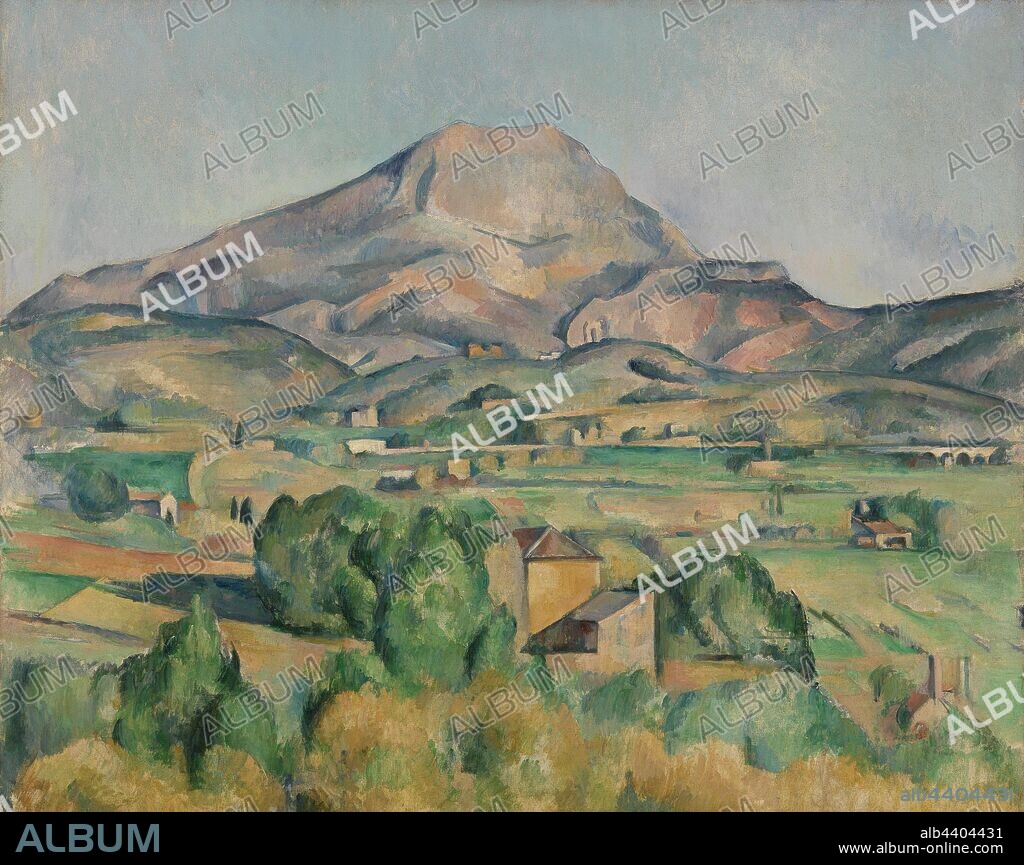alb4404431
Paul Cézanne: Mont Sainte-Victoire (La Montagne Sainte-Victoire), Paul Cézanne, 1892–1895, Oil on canvas, Mont Sainte-Victoire, which towered over the Aix-en-Provence region of southern France, was one of Cézanne's favorite motifs. He knew the mountain well, having spent his childhood exploring its terrain, and he painted it several dozen times from different vantage points. Certainly the shape and structure of the mountain appealed to Cézanne as a painter. But the mountain also held symbolic meaning, representing for him the ancient countryside—the authentic France—during a moment when Paris was rapidly modernizing. On the right side of the canvas, one can just make out an ancient Roman aqueduct., Overall: 28 3/4 x 36 1/4 in. (73 x 92 cm).

|
Añadir a otro lightbox |
|
Añadir a otro lightbox |



¿Ya tienes cuenta? Iniciar sesión
¿No tienes cuenta? Regístrate
Compra esta imagen

Descripción:
Ver traducción automática
Paul Cézanne: Mont Sainte-Victoire (La Montagne Sainte-Victoire), Paul Cézanne, 1892–1895, Oil on canvas, Mont Sainte-Victoire, which towered over the Aix-en-Provence region of southern France, was one of Cézanne's favorite motifs. He knew the mountain well, having spent his childhood exploring its terrain, and he painted it several dozen times from different vantage points. Certainly the shape and structure of the mountain appealed to Cézanne as a painter. But the mountain also held symbolic meaning, representing for him the ancient countryside—the authentic France—during a moment when Paris was rapidly modernizing. On the right side of the canvas, one can just make out an ancient Roman aqueduct., Overall: 28 3/4 x 36 1/4 in. (73 x 92 cm)
Personas:
Crédito:
Album / quintlox
Autorizaciones:
Modelo: No - Propiedad: No
¿Preguntas relacionadas con los derechos?
¿Preguntas relacionadas con los derechos?
Tamaño imagen:
6145 x 4870 px | 85.6 MB
Tamaño impresión:
52.0 x 41.2 cm | 20.5 x 16.2 in (300 dpi)
Palabras clave:
ACEITE • CÉZANNE • ESTRUCTURA • FORMA • INSTANTE • LIENZO • MONTAÑA • PAINTER • PARIS • PAUL CEZANNE • PINTADO • PINTOR • QUE REPRESENTAN • SHAPE
 Pinterest
Pinterest Twitter
Twitter Facebook
Facebook Copiar enlace
Copiar enlace Email
Email
